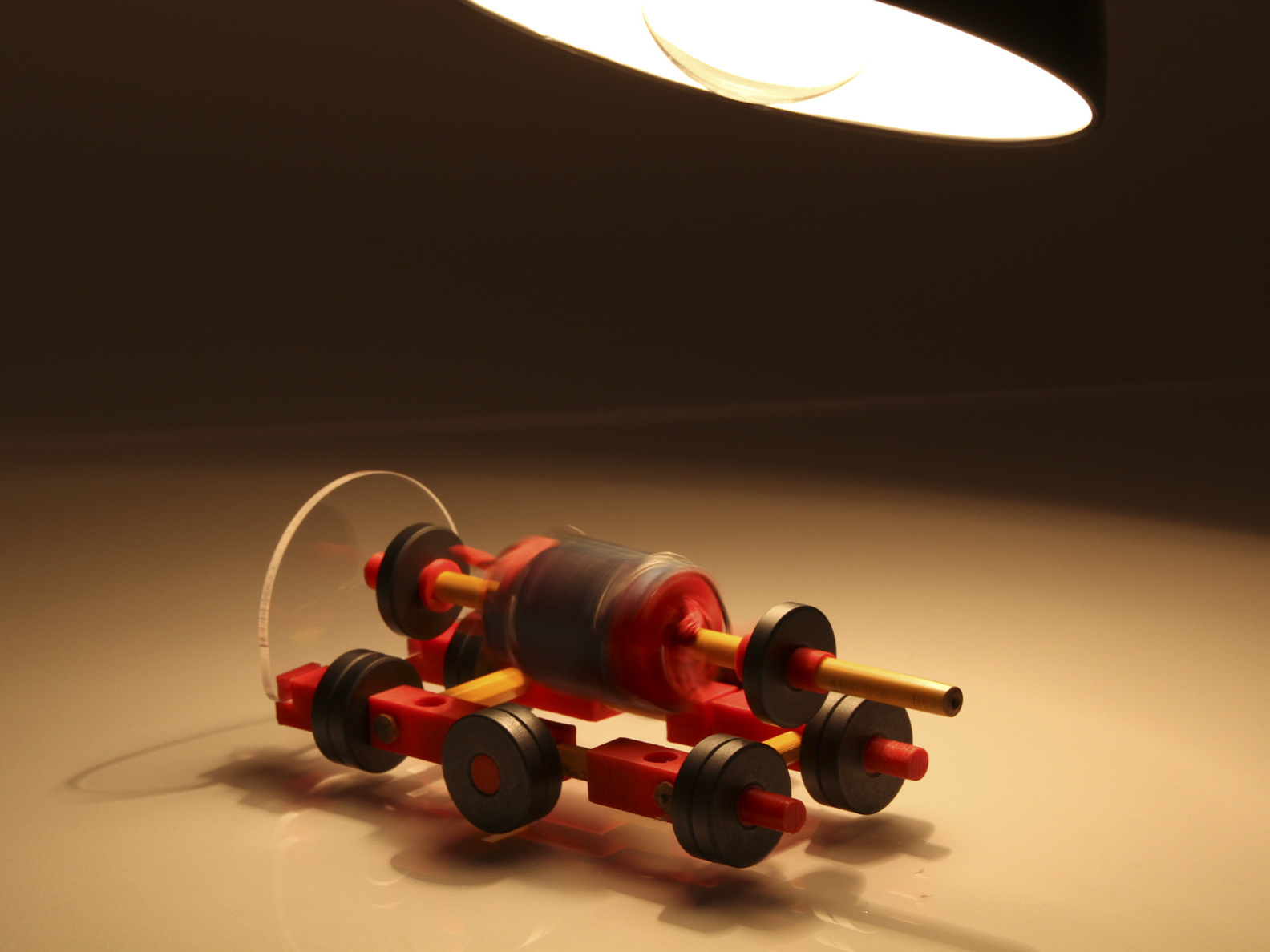Balance is a common problem. Remove the stator magnets, then turn the rotor ½ turn and let go (don’t spin it). If it rotates back to its original position instead of rotating forward, add weight to the highest part of the circle. Try brass or solder. Don’t add nails or other steel weights, because they’re made with iron, and are magnetic.
Magnets must be firmly and accurately placed. If they can wobble out of position, they will.
If needed, neatly tape the base magnets to keep them aligned straight up and down. Make sure they’re all oriented with South poles facing inward, or at least all facing consistently.
If needed, add tape to the bushings to keep the rotor magnets from wobbling. Again, the front rotor magnet is centered over the frontmost base magnet, and the rear rotor magnet is centered over the rear pair of base magnets.
Solar cells — Make sure you have continuity between each pair of opposite cells, and not between adjacent cells. If your continuity is off, you may have to rewire the connections. If a cell is connected to an adjacent cell, then reconnect it to the opposite cell.
Reversed polarity — If everything above is correct, and the rotor still just wobbles back and forth in the light, try this technique.
Neatly cut one pair of coil wires from one pair of cells. Re-sand the ends of the wires, then solder them onto the cell leads opposite from the leads they were on originally. This changes the direction of the electricity flowing through that particular coil. If your problem was reversed polarity, this should fix it.


